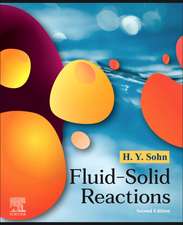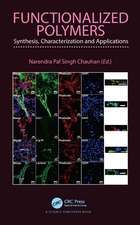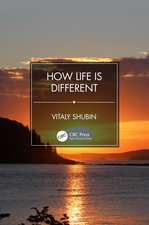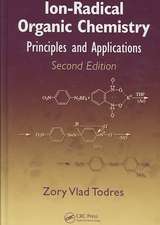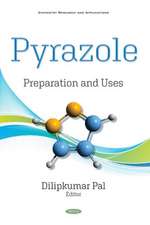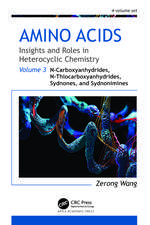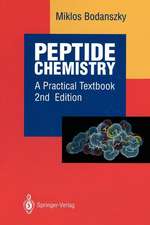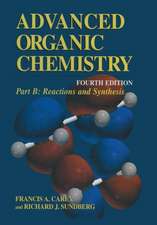Advanced Organic Chemistry: Part B: Reaction and Synthesis: Advanced Organic Chemistry
Autor Francis A. Carey, Richard J. Sundbergen Limba Engleză Paperback – 6 sep 2007
| Toate formatele și edițiile | Preț | Express |
|---|---|---|
| Paperback (2) | 383.58 lei 3-5 săpt. | +96.95 lei 7-13 zile |
| Springer Us – 6 sep 2007 | 383.58 lei 3-5 săpt. | +96.95 lei 7-13 zile |
| Springer Us – 13 iun 2007 | 541.25 lei 3-5 săpt. | +85.40 lei 7-13 zile |
Preț: 383.58 lei
Preț vechi: 462.14 lei
-17% Nou
73.40€ • 76.84$ • 60.73£
Carte disponibilă
Livrare economică 15-29 martie
Livrare express 01-07 martie pentru 106.94 lei
Specificații
ISBN-10: 0387683542
Pagini: 1321
Ilustrații: XXX, 1321 p.
Dimensiuni: 184 x 254 x 64 mm
Greutate: 2.54 kg
Ediția:5th ed. 2007
Editura: Springer Us
Colecția Springer
Seriile Advanced Organic Chemistry, Part B: Reactions and Synthesis
Locul publicării:New York, NY, United States
Public țintă
GraduateCuprins
Alkylation of Enolates and Other Carbon Nucleophiles.- Reactions of Carbon Nucleophiles with Carbonyl Compounds.- Functional Group Interconversion by Substitution, Including Protection and Deprotection.- Electrophilic Additions to Carbon-Carbon Multiple Bonds.- Reduction of Carbon-Carbon Multiple Bonds, Carbonyl Groups, and Other Functional Groups.- Concerted Cycloadditions, Unimolecular Rearrangements, and Thermal Eliminations.- Organometallic Compounds of Group I and II Metals.- Reactions Involving Transition Metals.- Carbon-Carbon Bond-Forming Reactions of Compounds of Boron, Silicon, and Tin.- Reactions Involving Carbocations, Carbenes, and Radicals as Reactive Intermediates.- Aromatic Substitution Reactions.- Oxidations.- Multistep Syntheses.
Recenzii
"Advanced Organic Chemistry … the well-known textbook for graduate students – has now appeared in a 5th edition. … Carey & Sundberg will be interesting to all students who seek a detailed understanding of organic chemistry, and who wish to refresh and embellish their existing knowledge. On the strength of the scope and quality of the explanations, this pair of texts is recommended for use as the resource of first resort for specific research questions in one’s later career." (www.organische-chemie.ch, January, 2008)
Notă biografică
Francis A. Carey is a native of Pennsylvania, educated in the public schools of Philadelphia, at Drexel University (B.S. in chemistry, 1959), and at Penn State (Ph.D. 1963). Following postdoctoral work at Harvard and military service, he was appointed to the chemistry faculty of the University of Virginia in 1966. Prior to retiring in 2000, he regularly taught the two-semester lecture courses in general chemistry and organic chemistry. With his students, Professor Carey has published over forty research papers in synthetic and mechanistic organic chemistry.
Caracteristici
Descriere
Since its original appearance in 1977, Advanced Organic Chemistry has maintained its place as the premier textbook in the field, offering broad coverage of the structure, reactivity and synthesis of organic compounds. As in the earlier editions, the text contains extensive references to both the primary and review literature and provides examples of data and reactions that illustrate and document the generalizations. While the text assumes completion of an introductory course in organic chemistry, it reviews the fundamental concepts for each topic that is discussed.
The two-part fifth edition has been substantially revised and reorganized for greater clarity. Among the changes: Updated material reflecting advances in the field since 2001’s Fourth Edition, especially in computational chemistry; A companion Web site provides digital models for study of structure, reaction and selectivity; Solutions to the exercises provided to instructors online.
The control of reactivity to achieve specific syntheses is one of the overarching goals of organic chemistry. Part B describes the most general and useful synthetic reactions, organized on the basis of reaction type. Together with Part A: Structure and Mechanisms, the two volumes are intended to provide the advanced undergraduate or beginning graduate student in chemistry with a sufficient foundation to comprehend and use the research literature in organic chemistry.
Textul de pe ultima copertă
The two-part fifth edition has been substantially revised and reorganized for greater clarity. Part A begins with the fundamental concepts of structure and stereochemistry, and the thermodynamic and kinetic aspects of reactivity. Major reaction types covered include nucleophilic substitution, addition reactions, carbanion and carbonyl chemistry, aromatic substitution, pericyclic reactions, radical reactions, and photochemistry.
Among the changes:
- Coverage of the importance of computational chemistry in modern organic chemistry, including applications to many specific reactions.
- Expanded coverage of stereoselectivity and enantioselectivity, including discussion of several examples of enantioselective reagents and catalysts
- Chapter 10, Concerted Pericyclic Reactions, has been reorganized and now begins with cycloaddition reactions.
- The treatment of photochemical reactions has been extensively updated to reflect both experimental and computational studies of the transient intermediates involved in photochemical reactions.
- A companion Web site provides digital models for study of structure, reaction and selectivity. Here students can view and manipulate computational models of reaction paths. These sites also provide exercises based on detailed study of the computational models.
- Several chapters in Part A conclude with Topics – short excursions into specific topics such as more detailed analysis of polar substituent effects, efforts to formulate substituent effects in terms of density functional theory, or the role of carbocations in petroleum refining
- Solutions to the chapter problems are provided to instructors online



